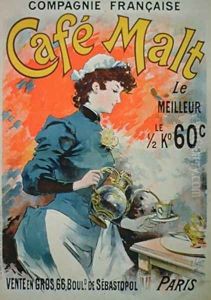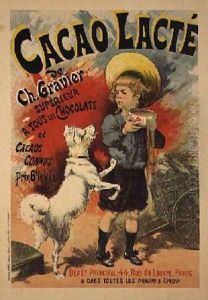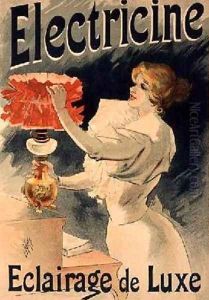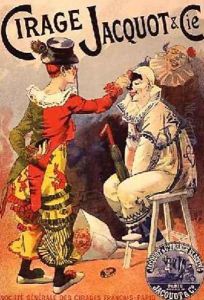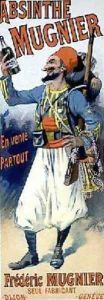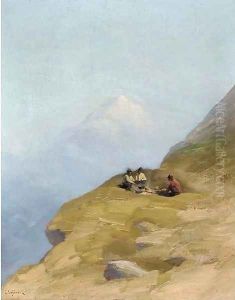Lucien Lefevre Paintings
Lucien Lefevre was a French artist known for his contributions to the art of poster-making during the Belle Époque, the period in France characterized by optimism, peace at the national level, and flourishing arts and culture between the 1870s and the outbreak of World War I in 1914. Lefevre's exact birth and death dates are not well-documented, which is not uncommon for artists whose work was popular in commercial contexts but who did not achieve lasting fame. Born in 1850, Lefevre's career unfolded during a vibrant period for graphic arts, which saw the emergence of lithography as a popular medium for advertising and art.
Lefevre's work is emblematic of the Belle Époque's aesthetic with its bold colors, dynamic compositions, and often an Art Nouveau influence. Art Nouveau was a style of decorative art, architecture, and design that emerged in the late 19th century and is characterized by intricate linear designs and flowing curves based on natural forms. In the realm of poster art, this style was championed by artists like Alphonse Mucha and Henri de Toulouse-Lautrec, and Lefevre's work sometimes reflected this influence.
Although comprehensive biographical details about Lefevre are scarce, his surviving posters indicate that he was active in the late 19th and early 20th centuries. He created advertisements for various products and events, including soaps, liquors, and cultural events. These posters were not only advertisements but also considered works of art that contributed to the visual culture of the time.
Lefevre's technique involved bold use of color and a clear typographic hierarchy, which made his posters visually striking and effective as advertisements. He was part of the wave of artists who elevated commercial poster art to a status that was appreciated by both the general public and collectors. Despite the commercial nature of his work, Lefevre, like many of his contemporaries, was able to express his artistic vision within the constraints of advertising and in doing so, left an imprint on the history of graphic design.
Unfortunately, the lack of records about Lefevre's life and the absence of a known death date suggest that he did not achieve the same level of enduring fame as some of his peers. His works, when they surface, are of interest to collectors of Belle Époque posters and those with an appreciation for the early history of graphic design. The legacy of artists like Lefevre is evident in the continued interest in and study of the posters of this golden age of French poster art.
